 W
WThe colonial history of the United States covers the history of European colonization of America from the early 16th century until the incorporation of the colonies into the United States of America. In the late 16th century, England, France, Castile, and the Dutch Republic launched major colonization programs in America. The death rate was very high among those who arrived first, and some early attempts disappeared altogether, such as the English Lost Colony of Roanoke. Nevertheless, successful colonies were established within several decades.
 W
WThe New England Colonies of British America included Connecticut Colony, the Colony of Rhode Island and Providence Plantations, Massachusetts Bay Colony, Plymouth Colony, and the Province of New Hampshire, as well as a few smaller short-lived colonies. The New England colonies were part of the Thirteen Colonies and eventually became five of the six states in New England. Captain John Smith's 1616 work A Description of New England first applied the term "New England" to the coastal lands from Long Island Sound to Newfoundland.
 W
WThe Middle Colonies were a subset of the Thirteen Colonies in British America, located between the New England Colonies and the Southern Colonies. Along with the Chesapeake Colonies, this area now roughly makes up the Mid-Atlantic states.
 W
WThe Southern Colonies within British America consisted of the Province of Maryland, the Colony of Virginia, the Province of Carolina and the Province of Georgia. In 1763, the newly created colonies of East Florida and West Florida would be added to the Southern Colonies by Great Britain until when the Spanish Empire took back Florida.
 W
WBritish America comprised the colonial territories of the British Empire in America from 1607 to 1783. These colonies were formally known as British America and the British West Indies before the Thirteen Colonies declared their independence in the American Revolutionary War (1775–1783) and formed the United States of America. After the American Revolution, the term British North America referred to the remainder of Great Britain's Canadian possessions. That term was first used informally in 1783, but it was uncommon before the Report on the Affairs of British North America (1839), generally known as the Durham Report.
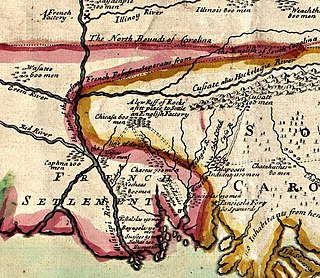 W
WThe Chickasaw Wars were fought in the 18th century between the Chickasaw allied with the British against the French and their allies the Choctaws and Illinois Confederation. The Province of Louisiana extended from Illinois to New Orleans, and the French fought to secure their communications along the Mississippi River. The Chickasaw, dwelling in northern Mississippi and western Tennessee, lay across the French path. Much to the eventual advantage of the British and the later United States, the Chickasaw successfully held their ground. The wars came to an end only with the French cession of New France to the British in 1763 according to terms of the Treaty of Paris.
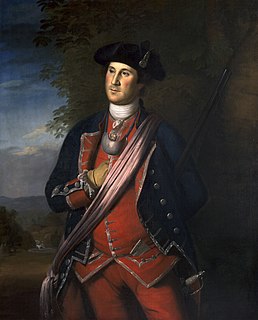 W
WColonial American military history is the military record of the Thirteen Colonies from their founding to the American Revolution in 1775.
 W
WThe Dummer's War was a series of battles between New England and the Wabanaki Confederacy who were allied with New France. The eastern theater of the war was fought primarily along the border between New England and Acadia in Maine, as well as in Nova Scotia; the western theater was fought in northern Massachusetts and Vermont at the border between Canada and New England. During this time, Maine and Vermont were part of Massachusetts.
 W
WNew Netherland was a 17th-century colony of the Dutch Republic that was located on what is now the east coast of the United States. The claimed territories extended from the Delmarva Peninsula to southwestern Cape Cod, while the more limited settled areas are now part of New York, New Jersey, Delaware, and Connecticut, with small outposts in Pennsylvania and Rhode Island.
 W
WThe European colonization of the Americas describes the Age of Exploration and the resulting conquest of indigenous lands. The Age of Exploration represents the beginning of the establishment of Western European control in what is now considered North and South America. Europe had been preoccupied with internal wars and was slowly recovering from the loss of population caused by the Black Death; thus the rapid rate at which it grew in wealth and power was unforeseeable in the early 15th century.
 W
WNew France, also sometimes known as the French North American Empire or Royal New France, was the area colonized by France in North America, beginning with the exploration of the Gulf of Saint Lawrence by Jacques Cartier in 1534 and ending with the cession of New France to Great Britain and Spain in 1763 under the Treaty of Paris (1763).
 W
WThe French and Indian War (1754–1763) pitted the colonies of British America against those of New France, each side supported by military units from the parent country and by Native American allies. At the start of the war, the French colonies had a population of roughly 60,000 settlers, compared with 2 million in the British colonies. The outnumbered French particularly depended on the natives.
 W
WThe western theatre of Dummer's War in the 1720s in northern New England was referred to as "Grey Lock's War". Grey Lock distinguished himself by conducting guerrilla raids into Vermont and western Massachusetts. He consistently eluded his pursuers, and acquired the name Wawanolet, meaning "he who fools the others, or puts someone off the track."
 W
WThis is a list of historic regions of the United States that existed at some time during the territorial evolution of the United States and its overseas possessions, from the colonial era to the present day. It includes formally organized territories, proposed and failed states, unrecognized breakaway states, international and interstate purchases, cessions, and land grants, and historical military departments and administrative districts. The last section lists informal regions from American vernacular geography known by popular nicknames and linked by geographical, cultural, or economic similarities, some of which are still in use today.
 W
WHistorically, an indentured servant or indentured laborer was a man who took out a loan, most often to pay for the cost of his transportation to a job location: from Europe to North America, for example. In order to pay off this loan, the employee (indenturee) agreed to work without salary for the lender for a specific number of years.
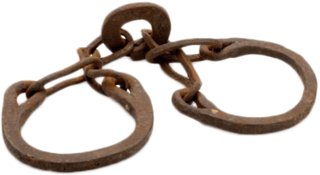 W
WIndentured servitude in Pennsylvania (1682-1820s): The institution of indentured servitude has a significant place in the history of labor in Pennsylvania. From the founding of the colony (1681/2) to the early post-revolution period (1820s), indentured servants contributed considerably to the development of agriculture and various industries in Pennsylvania. Moreover, Pennsylvania itself has a notable place in the broader history of indentured servitude in North America. As Cheesman Herrick stated, "This system of labor was more important to Pennsylvania than it was to any other colony or state; it continued longer in Pennsylvania than elsewhere."
 W
WJohn Bush was an African provincial soldier with the Massachusetts militia who fought on the side of Britain during the French and Indian Wars in North America. He is known for his carving of powder horns of the time. One of his 1756 horns has been part of a travelling exhibition throughout Canada and US. The quality of his carving and use of calligraphy has been called "superb". Bush's carving style and decorative embellishments were used in for the Lake George School during the French and Indian War. Other powder horn carvers adopted Bush's engraving style. They are known as the Sekrig-Page carver, the I.W. carver, and the Memento Mori carver. Bush is considered a founder of American folk art. He was captured during the battle and fall of Fort William Henry August 9, 1757. What happened after this is not known. John Bush's father, George Bush, moved to Massachusetts Bay during the eighteenth century. John Bush's mother is unknown. George was a farmer in North Parish of Shrewsbury. George died at the age of eighty years old in 1767. John had three brothers who also fought with the Massachusetts militia during the war. They were George Bush, who died on September 25, 1755 and Joseph Bush, who died on April 8, 1756.
 W
WKing George's War (1744–1748) is the name given to the military operations in North America that formed part of the War of the Austrian Succession (1740–1748). It was the third of the four French and Indian Wars. It took place primarily in the British provinces of New York, Massachusetts Bay, New Hampshire, and Nova Scotia. Its most significant action was an expedition organized by Massachusetts Governor William Shirley that besieged and ultimately captured the French fortress of Louisbourg, on Cape Breton Island in Nova Scotia, in 1745. In French, it is known as the Troisième Guerre Intercoloniale or Third Intercolonial War.
 W
WKing William's War was the North American theater of the Nine Years' War (1688–1697), also known as the War of the Grand Alliance or the War of the League of Augsburg. It was the first of six colonial wars fought between New France and New England along with their respective Native allies before France ceded its remaining mainland territories in North America east of the Mississippi River in 1763.
 W
WBefore and during the colonial period of North America, Native American women had a role in society that contrasted with that of the settlers. While they were delegated the task of caring for children and preparing meals, their other roles varied between tribal groups. In many tribes, such as the Algonquins and Iroquois, women were responsible for tending to the fields while the men were responsible for hunting, while in others those tasks were both done by men. As many tribes relied on hunting and participated in warfare, there were often long periods in which the men were not present, leading to women playing a major role in the family and exerting significant control over social and economic factors within the tribes.
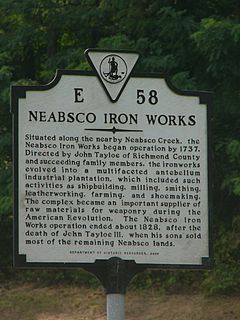 W
WThe Neabsco Iron Works was located in Woodbridge, Virginia, US. It was situated on 5,000 acres (2,000 ha) by the Neabsco Creek.
 W
WNew Sweden was a Swedish colony along the lower reaches of the Delaware River in America from 1638 to 1655, established during the Thirty Years' War when Sweden was a great military power. New Sweden was part of Swedish colonization efforts in the Americas. Settlements were established on both sides of the Delaware Valley in the region of Delaware, New Jersey, New York, and Pennsylvania, often in places where Swedish traders had been visiting since about 1610. Fort Christina in Wilmington, Delaware was the first settlement, named after the reigning Swedish monarch. The settlers were Swedes, Finns, and a number of Dutch. New Sweden was conquered by the Dutch Republic in 1655 during the Second Northern War and incorporated into the Dutch colony of New Netherland.
 W
WThe Oneida Carry was an important link in the main 18th century trade route between the Atlantic seaboard of North America and interior of the continent. From Schenectady, near Albany, New York on the Hudson River, cargo would be carried upstream along the Mohawk River using boats known as bateaux. At the location at modern-day Rome, New York, the cargo and boats would be portaged one to four miles overland to Wood Creek. This portage, which the Haudenosaunee called De-o-Wain-Sta, was known as the Oneida Carry or The Great Carrying Place in English, and as Trow Plat in Dutch. After relaunching into Wood Creek, the bateaux would navigate downstream to Oneida Lake, the Oswego River, and ultimately Lake Ontario at Oswego. Lake Ontario was the gateway to all the Great Lakes stretching another thousand miles inland.
 W
WOrganized incorporated territories are territories of the United States that are both incorporated and organized. There have been no such territories since 1959.
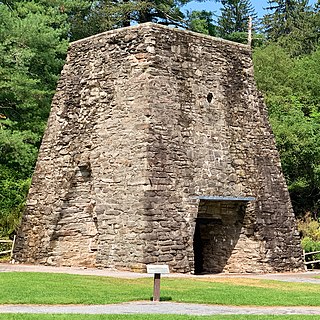 W
WThe Pine Grove Iron Works was a southcentral Pennsylvania smelting facility during the Industrial Revolution. The works is notable for remaining structures that are historical visitor attractions of Pine Grove Furnace State Park, including the furnace stack of the Pine Grove Furnace. The site was listed on the National Register of Historical Places on April 13, 1977 for its significance in architecture and industry. It includes seven contributing buildings, two structures, fourteen sites, and two objects.
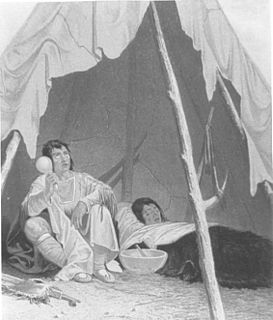 W
WThe population figure of indigenous peoples of the Americas before the 1492 Spanish voyage of Christopher Columbus has proven difficult to establish. Scholars rely on archaeological data and written records from European settlers. Most scholars writing at the end of the 19th century estimated that the pre-Columbian population was as low as 10 million; by the end of the 20th century most scholars gravitated to a middle estimate of around 50 million, with some historians arguing for an estimate of 100 million or more. Contact with the Europeans led to the European colonization of the Americas, in which millions of immigrants from Europe eventually settled in the Americas.
 W
WQueen Anne's War (1702–1713) was the second in a series of French and Indian Wars fought in England's Thirteen American Colonies during the reign of Anne, Queen of Great Britain. In Europe, it is generally viewed as the American theater of the War of the Spanish Succession; in the Americas, it is more commonly viewed as a standalone conflict. It is also known as the Third Indian War or as the Second Intercolonial War in France.
 W
WThe Roanoke Colony refers to two attempts by Sir Walter Raleigh to found the first permanent English settlement in North America. The English, led by Humphrey Gilbert, had claimed St. John's, Newfoundland, in 1583 as the first North American English colony by royal prerogative of Queen Elizabeth I. Roanoke was second. The first Roanoke colony was established by governor Ralph Lane in 1585 on Roanoke Island in what is now Dare County, North Carolina, United States. Following the failure of the 1585 settlement, a second colony led by John White landed on the same island in 1587, and became known as the Lost Colony due to the unexplained disappearance of its population.
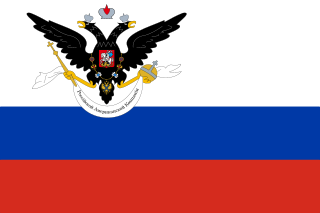 W
WRussian America was the name of the Russian colonial possessions in North America from 1733 to 1867. Its capital was Novo-Arkhangelsk, which is now Sitka, Alaska, United States. Settlements spanned parts of what are now the U.S. states of California, Alaska and three forts in Hawaii. Formal incorporation of the possessions by Russia did not take place until the Ukase of 1799 which established a monopoly for the Russian–American Company and also granted the Russian Orthodox Church certain rights in the new possessions. Many of its possessions were abandoned in the 19th century. In 1867, Russia sold its last remaining possessions to the United States of America for $7.2 million.
 W
WThe Russian colonization of the Americas covers the period from 1732 to 1867, when the Russian Empire laid claim to northern Pacific Coast territories in the Americas. Russian colonial possessions in the Americas are collectively known as Russian America. Russian expansion eastward began in 1552, and in 1639 Russian explorers reached the Pacific Ocean. In 1725, Emperor Peter the Great ordered navigator Vitus Bering to explore the North Pacific for potential colonization. The Russians were primarily interested in the abundance of fur-bearing mammals on Alaska's coast, as stocks had been depleted by over hunting in Siberia. Bering's first voyage was foiled by thick fog and ice, but in 1741 a second voyage by Bering and Aleksei Chirikov made sight of the North American mainland.
 W
WScottish colonisation of the Americas comprised a number of failed or abandoned Scottish settlements in North America; a colony at Darien on the Isthmus of Panama; and a number of wholly or largely Scottish settlements made after the Acts of Union 1707, and those made by the enforced resettlement after the Battle of Culloden and the Highland Clearances.
 W
WThe Seven Years' War (1756–1763) was a global conflict, "a struggle for global primacy between Britain and France," which also had a major impact on the Spanish Empire. In Europe, the conflict arose from issues left unresolved by the War of the Austrian Succession, with Prussia seeking greater dominance. Long standing colonial rivalries between Britain against France and Spain in North America and the Caribbean islands valuable for sugar were fought on a grand scale with consequential results. In Europe, the war broke out over territorial disputes between Prussia and Austria, which wanted to regain Silesia after it was captured by the former in the previous war. Britain, France, and Spain fought both in Europe and overseas with land-based armies and naval forces, while Prussia sought territorial expansion in Europe and consolidation of its power.
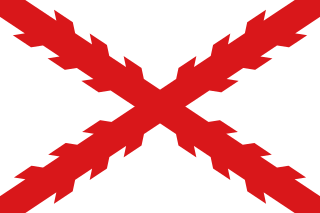 W
WThe Viceroyalty of New Spain was an integral territorial entity of the Spanish Empire, established by Habsburg Spain during the Spanish colonization of the Americas. It covered a huge area that included much of North America, northern parts of South America and several Pacific Ocean archipelagos, namely Philippines and Guam. It originated in 1521 after the fall of Tenochtitlan, the main event of the Spanish conquest, and officially created on 18 August 1521 as a kingdom, the first of four viceroyalties Spain created in the Americas. Its first viceroy was Antonio de Mendoza y Pacheco, and the capital of the kingdom was Mexico City, established on the ancient Tenochtitlan.
 W
WTobacco cultivation and exports formed an essential component of the American colonial economy. During the Civil War, they were distinct from other cash crops in terms of agricultural demands, trade, slave labor, and plantation culture. Many influential American revolutionaries, including Thomas Jefferson and George Washington, owned tobacco plantations, and were financially devastated by debt to British tobacco merchants shortly before the American Revolution.